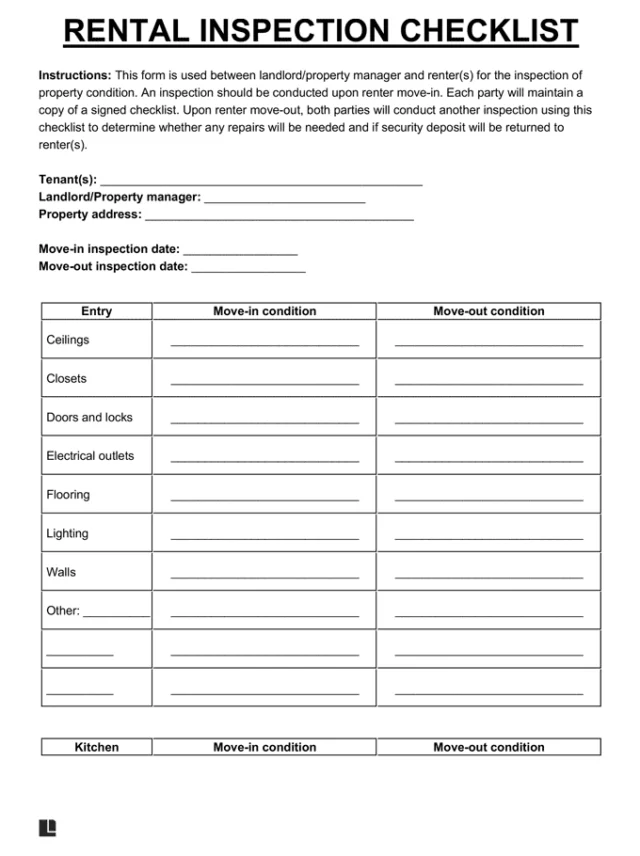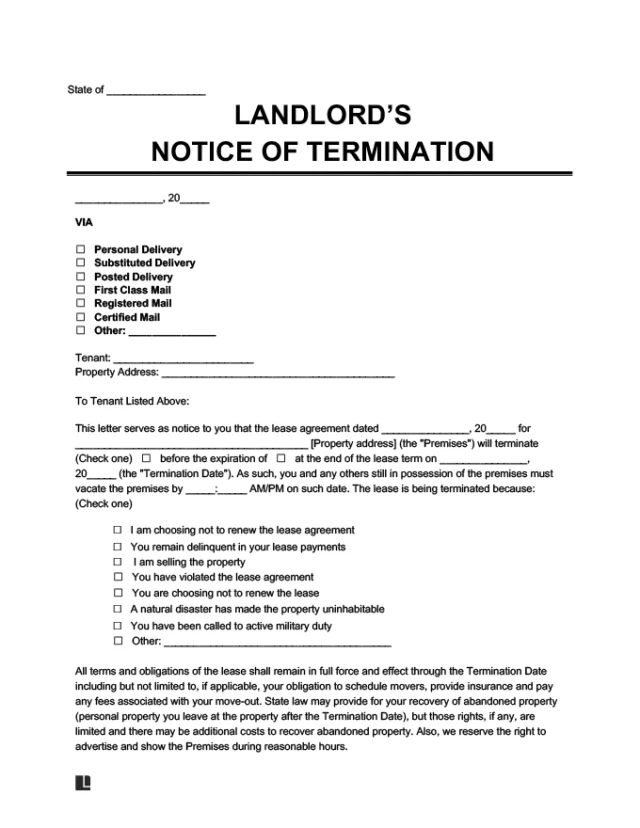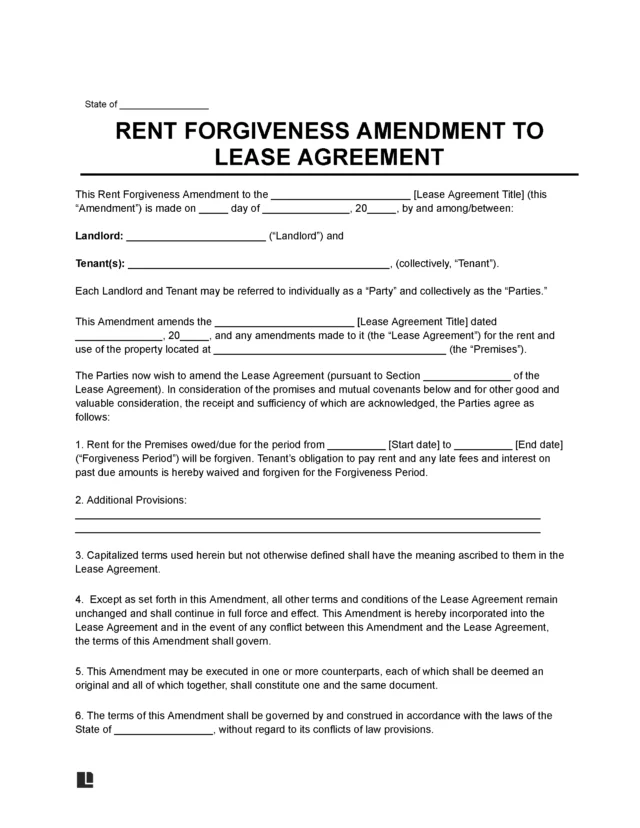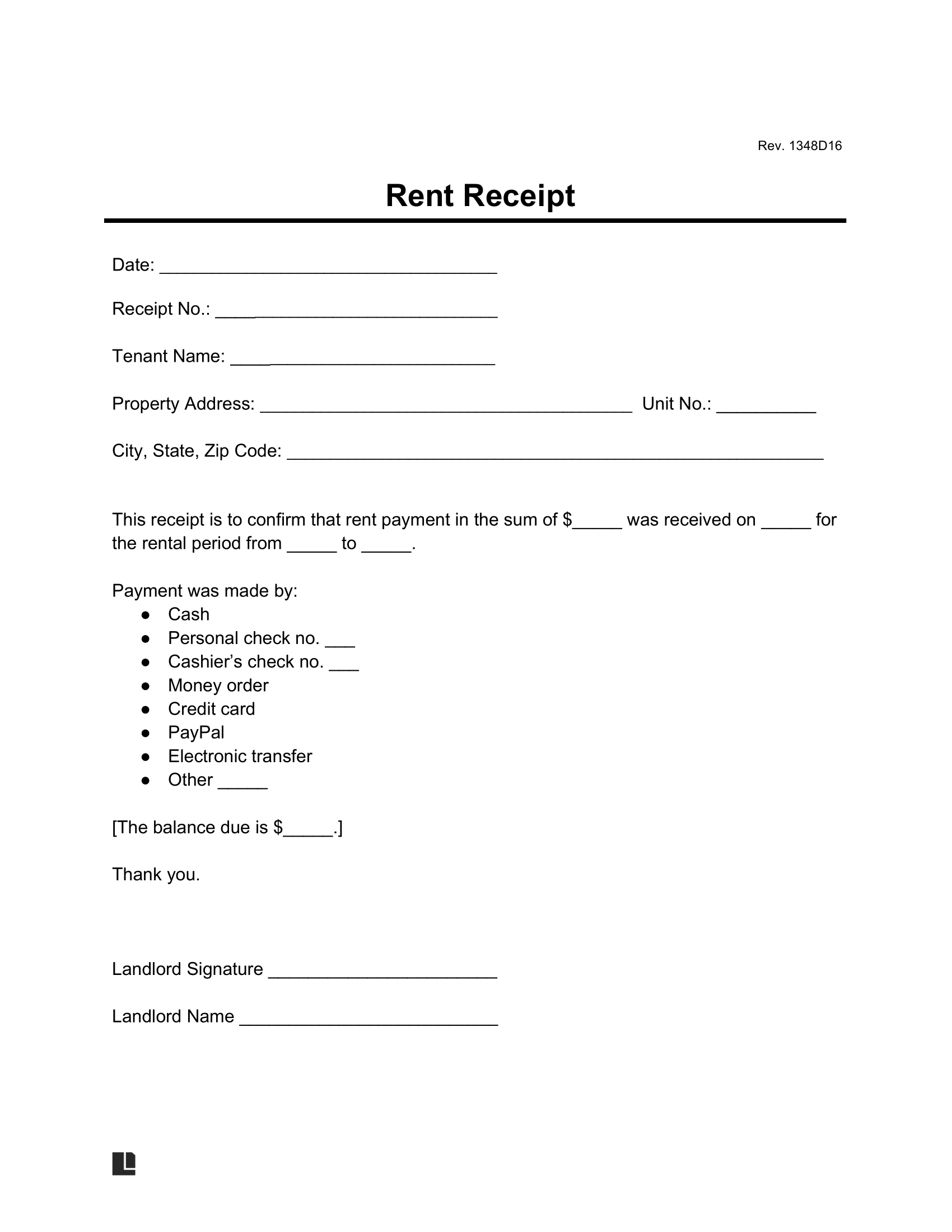What Is a Rent Receipt?

A rent receipt verifies that you received a tenant’s rent payment. It records key details, such as the tenant’s address, amount of rent paid, and rental period. As the landlord, you deliver this document to your tenant after they issue payment. It often records payments made via cash, but it can document other payment methods, too.
For example, suppose a tenant is on a year-long lease agreement and rent is due on the first of each month. The property manager will issue up to 12 rent receipts during the lease, one each month after they receive payment.
Our rent receipt template helps you keep track of payments and provide adequate proof to tenants. Build tenant confidence in your property management practices with clear documentation.
What if a Tenant Misses a Payment?
If a tenant misses a rent payment, don’t let it go unaddressed. Issue a late rent notice to alert them and encourage them to pay.
Benefits for Landlords
Landlords can reap the following benefits from issuing rent receipts to tenants:
- Meet state rules requiring proof of rent payments
- Stay organized and professional
- Track rental income and claim deductions
- Show tenant payments to keep housing aid
- Document late payments for possible eviction
Benefits for Tenants
Tenants gain the following benefits when they receive proof of rental payments from their landlords:
- Settle disputes by proving rent was paid
- Support return of security deposit with payment history
- Track rent for budgeting and tax purposes
- Show rental history to defend against eviction
- Use receipts and Form 8829 to claim home office tax deductions
What to Include in a Valid Rental Receipt
When you write a rental receipt, you should ensure to include key details to make the payment record clear. Here are some essential elements of the standard rent receipt format:
- Date of payment: The date the tenant submitted their payment.
- Amount: The amount the tenant pays for a certain rental period.
- Payment method: Cash payments, credit cards, personal checks, or another method.
- Rental period covered: The duration the payment covers.
- Landlord’s and tenant’s information: Both the landlord and tenant’s name and contact details.
- Rental property address: Street address, city, state, ZIP code, and unit number (if applicable).
- Landlord’s signature: The landlord’s signature to confirm payment was received.
How to Fill Out a Rent Receipt
Use a proof of rent payment letter to provide proof of rental payments and build trust with tenants. Learn how to write this proof using Legal Templates’ simple rent receipt template.
1. Determine If a Rent Receipt Is Necessary
As a landlord, you may wonder whether landlords need to provide rent receipts. Some states require landlords to give tenants rent receipts under certain circumstances, while others don’t have requirements.
Here’s a list of states where creating rent receipts is required and under what situations:
| State | Conditions Demanding a Receipt | Receipt Requirements | Statute |
|---|---|---|---|
| California | Upon request. | None. | Cal. Civ. Code § 1499 |
| Colorado | For money orders or cash payments. | Landlords must issue paper copies if tenants request them. | Colo. Rev. Stat. § 38-12-802 |
| Connecticut | For cash payments. | Must include the purpose, date, and amount. | Conn. Gen. Stat. § 47a-3a |
Even in areas where rental receipts aren’t required, it’s good practice to provide them. Tenants will appreciate the proof that they paid on time. Providing documentation can also boost your reputation as an experienced landlord. Consider issuing a receipt any time a tenant pays you, including for security deposit acknowledgment and as proof of paid pet deposits per the rental agreement.
Security Deposit Receipt
Use a separate security deposit receipt to show a tenant paid their security deposit.
2. Provide Payment Information
Select the payment method the tenant used. When you use Legal Templates’s form, you can choose the tenant’s payment method from a pre-written list, including cash or electronic transfers.
Be sure to include the payment amount and the rental period the payment covers. Our adjustable template options even allow you to record prorated rent payments so you can record payments for a partial rental period.
3. Write Rental Details
Record landlord and tenant information, including all tenants with a financial obligation. Provide the property address and other identifying details like unit number if applicable.
4. Finalize Receipt, Sign, & Distribute
Specify the date when you will deliver the receipt to the tenant. Legal Templates provides the option to include a receipt number for record-keeping purposes, but you may choose to skip this step.
Print out copies of the rental receipt. Sign and distribute one copy to the tenant and keep the second landlord receipt for your business records.
Rent Receipt Sample
View a free rent receipt sample to see what a rent receipt looks like. When you’re ready, complete your own with our rent receipt template and distribute payment proof seamlessly. Available as a PDF or Word download.
Complete Rent Receipts With Legal Templates
With Legal Templates, you can save time, money, and stress when creating rental receipts. It’s as simple as filling out our pre-made template and saving the receipts to your account. Print them when you’re ready and distribute them in person or via mail to tenants. You can also save rent receipt documents as PDF or Word documents and send them electronically.
No matter how you send them, our printable rent receipt template helps you record rent payments and stay organized so you can keep your tenants updated on their payment status.
Frequently Asked Questions
How do I send a rent receipt?
You can print a rent receipt and deliver it in person to the rented property, handing it to the primary tenant. Alternatively, you can mail it or send an electronic copy via email. Verify the tenant received it by asking for confirmation of receipt.
What should I do before issuing a rent receipt?
Collect payment from the tenant in whatever form you accept and confirm it goes through before you issue a rental receipt. For example, if a tenant pays by check, wait until the check clears to issue payment acknowledgment.
How do I accept online rent payments?
Sign up with a rent-collection website and notify your tenants about online payments and how to make them. They will likely need to set up their accounts to pay rent via ACH payments or use mobile payment services like Venmo. Issue a digital receipt by emailing a tenant a PDF file to confirm you received their payment.
Do rent receipts need to be signed?
It’s highly recommended for the landlord to sign their rent receipts because their signature adds validity to the document, instills confidence in the tenant, and fulfills legal requirements in some jurisdictions.
Are handwritten rent receipts valid?
Handwritten rent receipts are valid, but they must include all essential information, such as the payment amount, method, and tenant’s details. Ensure you don’t miss any details with Legal Templates’s rent receipt template.






